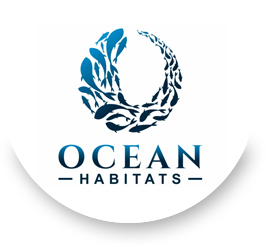Under The Docks MIA Students Enrich Marco Canals

Ocean Habitats, Inc. of Ft. Myers has been hard at work in Marco Island installing artificial reef habitats underneath existing docks. To date, they have installed 108 habitats in Marco Island’s canals with an additional 20-plus scheduled for installation. This is great news for the health of our canals.
According to David Wolff, Ocean Habitats’ president, this system replicates the ecosystem naturally found in fish nursery environments, where filter feeders feed on plankton floating in the seawater, removing them from the water and turning that plankton into food for all juvenile marine animals. Just one habitat covered with invertebrates such as oysters, sea squirts, mussels and more, can filter 35,000 gallons per day and turn that water from green and polluted into cleaner seawater.
Ocean Habitats has developed a strong partnership with students of Marco Island Academy (MIA) to provide Marco’s canals the chance to become a fully sustainable marine community. The students wanted to learn how to attract marine animals such as stone crabs, spiny lobsters, shrimps, and fish species like snapper, snook, grouper, mullet and many more back into our dockside canals.
MIA students, under the guidance of Jerry Miller, MIA’s science teacher, working closely with David Wolff of Ocean Habitats, have already built 20 habitats last semester with more habitats on the schedule. They also purchased professional grade water quality test equipment for their Ocean Habitats projects. According to Wolff, this hands-on science project would allow the students to perform water quality analysis on the waters around the habitats. It is exciting to learn that MIA donors also have purchased ocean habitats for their own docks. MIA and Ocean Habitats will continue to explore new ways to further the Ocean Habitats project.
A habitat at two years: Fully colonized with marine life; covered with invertebrates such as oysters, sea squirts and mussels.
Marco Island Academy science teacher Jerry Miller provided a project update to the city council in mid-January, and had this to say, “The kids have been really enjoying it, that’s probably the best part of it. To get a change of pace from learning to doing stuff.”
Installing the habitats is a family activity for the Wolff family. David has four children ages 9-16, and they often travel with him to help install the habitats and inspect older ones.


